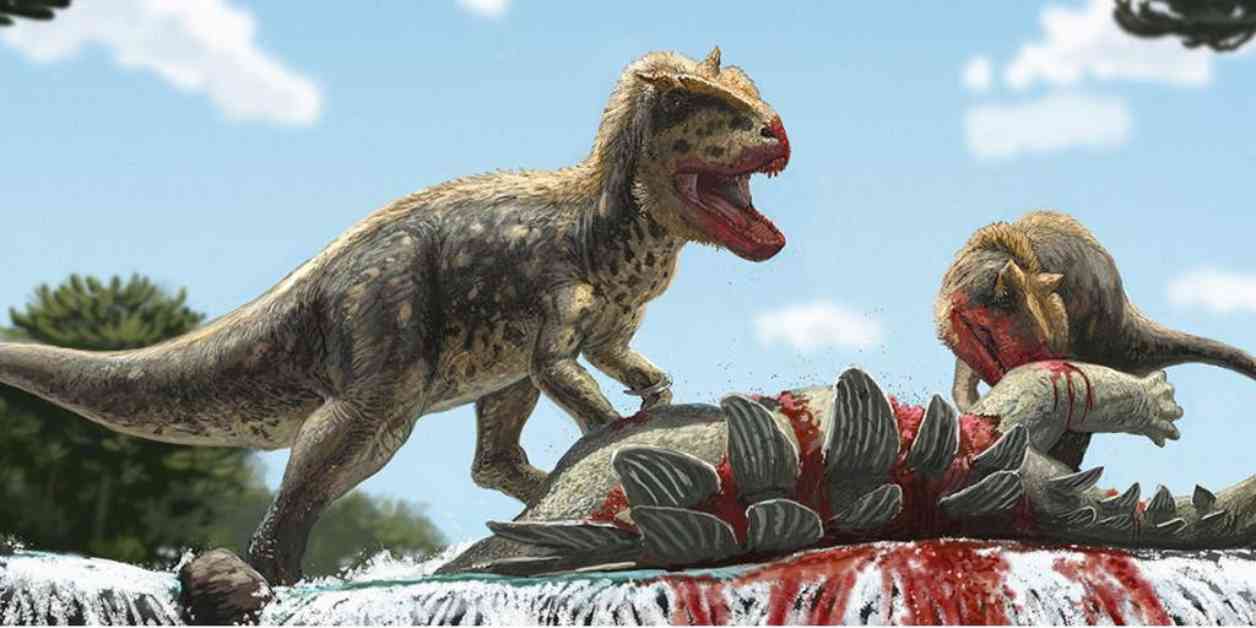A groundbreaking discovery in the world of paleontology has recently been made in Central Asia, shedding new light on the prehistoric creatures that once roamed the Earth. The Alpkarakush kyrgyzicus, a new species and genus of theropod dinosaur, has been unearthed in Kyrgyzstan by a team of German and Kyrgyz researchers. This finding marks the first time a theropod dinosaur has been discovered in Kyrgyzstan, making it a significant milestone in the study of dinosaurs in the region.
The discovery of the Alpkarakush kyrgyzicus is a testament to the ongoing efforts of scientists and researchers to uncover the mysteries of the ancient world. The fossils of this new dinosaur were first discovered in 2006 by Kyrgyz paleontologist Aizek Bakirov in a mountainous desert area near the city of Tashkumyr. Over the years, additional fossils, including skull bones, pelvic vertebrae, and forearms, have been found, providing valuable insights into the physical characteristics of this unique species.
The Significance of the Discovery
The Alpkarakush kyrgyzicus is estimated to have been around 30 feet in length, making it a formidable predator during the Jurassic period. One of the most striking features of this dinosaur is its extremely protruding ‘eyebrow’ on the postorbital bone, indicating the presence of a horn at that point. This distinctive trait sets the Alpkarakush kyrgyzicus apart from other theropod dinosaurs and highlights the diverse range of adaptations that existed among these ancient creatures.
According to the Bavarian State Natural History Collections in Germany, the discovery of the Alpkarakush kyrgyzicus is one of the most significant findings in Central Asia. Prior to this discovery, no large Jurassic predatory dinosaurs had been known to inhabit the area around Kyrgyzstan, bridging the gap between Central Europe and Eastern Asia in terms of dinosaur distribution. This groundbreaking discovery has opened up new possibilities for researchers to explore the evolutionary history and biogeography of theropod dinosaurs in the region.
Insights into Jurassic Theropods
Professor Oliver Rauhut of the Bavarian Collection of Paleontology and Geology in Munich, who was involved in the study published in the Zoological Journal of the Linnean Society, emphasized the importance of the Alpkarakush kyrgyzicus discovery. He stated, “This discovery closes a huge gap in our knowledge of the Jurassic theropods and leads us to important new insights into the evolution and biogeography of these animals.” The identification of this new species has provided researchers with a valuable opportunity to enhance their understanding of the ancient ecosystems that existed millions of years ago.
The similarities and differences between the Alpkarakush kyrgyzicus and the iconic Tyrannosaurus rex (T. rex) offer valuable insights into the evolutionary history of theropod dinosaurs. Both species belong to the same group of dinosaurs known as theropods, characterized by their strong back legs and shorter front limbs. While the T. rex lived during the later Cretaceous period and in different parts of the world, the Alpkarakush kyrgyzicus offers a unique perspective on the diversity of theropod dinosaurs during the Jurassic period.
Parent and Child Specimens
In addition to the adult Alpkarakush kyrgyzicus specimen, a smaller, juvenile dinosaur was also found at the site, leading researchers to believe that they may have been a parent and child. This discovery provides valuable insights into the behavior and social structure of theropod dinosaurs, shedding new light on how these creatures interacted with one another in the ancient world. The presence of both adult and juvenile specimens at the site highlights the importance of studying dinosaur fossils in their natural context to gain a more comprehensive understanding of their lives.
The naming of the Alpkarakush kyrgyzicus after a mythological Kyrgyz bird called Alpkarakush adds a cultural element to the discovery, reflecting the rich history and folklore of the region. The significance of this naming choice underscores the connection between scientific research and cultural heritage, highlighting the importance of preserving and celebrating the diverse narratives that contribute to our understanding of the natural world.
In conclusion, the discovery of the Alpkarakush kyrgyzicus represents a significant advancement in the field of paleontology, offering new insights into the evolution and diversity of theropod dinosaurs during the Jurassic period. This groundbreaking finding underscores the importance of ongoing research and exploration in uncovering the mysteries of the ancient world and expanding our knowledge of the diverse creatures that once inhabited the Earth. As scientists continue to study and analyze the fossils of the Alpkarakush kyrgyzicus, we can look forward to further discoveries that will enhance our understanding of the prehistoric world and the remarkable creatures that roamed the Earth millions of years ago.




